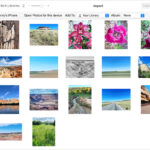So, you’re ready to launch your online store. You have amazing products, but how can you make them truly shine online? High-quality product photography is key to capturing attention and driving sales. This guide provides a comprehensive, step-by-step approach to taking stunning product photos using just your smartphone and natural light.
A simple setup near a window can create professional-looking product photos.
Creating the Perfect Phone Photography Setup
Forget expensive equipment; you can achieve professional results with a few simple tools. Here’s how to build your at-home studio:
1. Lighting is Key
Find a room bathed in natural light from a large window. The larger the window, the softer the light, resulting in subtle shadows and a more appealing image. Positioning your product closer to the window creates softer shadows, while moving it further away results in sharper ones. Experiment to find what works best for your product.
2. Smartphone Selection
Most modern smartphones boast impressive cameras capable of capturing high-quality images. Aim for a phone with a 12-megapixel camera or higher for optimal resolution.
3. Stabilize with a Tripod
Invest in a mini tripod to eliminate camera shake and ensure consistent angles across your product photos. A stable shot allows for sharper images and a more professional look. The Manfrotto Pixi mini tripod is a great option for beginners.
A mini tripod like the Manfrotto Pixi offers stability and consistent angles.
4. Backdrop Basics
Use a clean white backdrop, like a paper sweep or poster board, to minimize distractions and create a consistent look. Position the backdrop behind and underneath your product for a seamless effect.
A white backdrop reflects light onto the product for even illumination.
5. Bounce Light with Foam Boards
White foam boards act as reflectors, bouncing light back onto your product to fill in shadows and create a more balanced exposure.
6. Diffuse Harsh Sunlight
If sunlight is too intense, soften it with a diffuser sheet. You can purchase one online or create a DIY diffuser using parchment paper or a frosted shower curtain.
Mastering Natural Lighting
Lighting is paramount in product photography. Here’s how to harness natural light effectively:
-
Well-Lit Room: Opt for natural light from a window over artificial lighting. It creates natural shadows that add depth and texture to your product.
-
Proximity to Window: Position your setup at a 90-degree angle to the window. Shoot during the brightest part of the day, utilizing a diffuser sheet to soften harsh sunlight.
Experiment with placement and time of day to find the optimal lighting.
- Light Manipulation: Use foam boards and reflectors to control and direct light, filling in shadows and achieving balanced illumination.
Essential Camera Angles
Showcase your product from various angles to provide a comprehensive view and answer potential customer questions. Experiment with these five key angles:
-
Eye Level: A straight-on view, mimicking how one would see the product in person.
-
High Angle: Looking down at the product.
-
Low Angle: Looking up at the product.
-
Bird’s Eye: Directly overhead.
-
Slanted: Showcasing the product from the side.
Different angles highlight various product features and provide a complete view.
Phone Photography Best Practices
Follow these steps to capture high-quality product photos:
-
Phone Preparation: Ensure your phone is fully charged and has sufficient storage.
-
White Balance: Adjust white balance based on the ambient light by tapping the WB button and then the white backdrop.
-
Exposure Adjustment: Tap the Exposure button and then your product to optimize exposure.
-
Focus: Tap the Focus button and then your product to ensure sharp focus.
-
Lock Settings: Lock your camera settings to prevent automatic adjustments during shooting.
Common Mistakes to Avoid
Steer clear of these common pitfalls:
- Zooming In: Avoid using digital zoom as it reduces image quality. Crop your images during editing instead.
- Front-Facing Camera: Use the rear-facing camera for higher resolution.
- Using Flash: Opt for natural light to avoid overexposure and color distortion.
Editing Your Product Photos
Transform your photos with a few simple edits using mobile editing apps like Lightroom, Snapseed, or VSCO.
- Adjust brightness, contrast, sharpness, highlights/shadows, and white balance.
- Avoid overusing filters and aim for a natural look.
- Save your editing settings as presets for future use.
- Consider removing the background and replacing it with a pure white layer for a clean and professional look.
Lightroom offers powerful editing tools for both mobile and desktop.
By following these tips and techniques, you can elevate your product photography and create compelling visuals that attract customers and boost your online sales. Remember, practice makes perfect!
